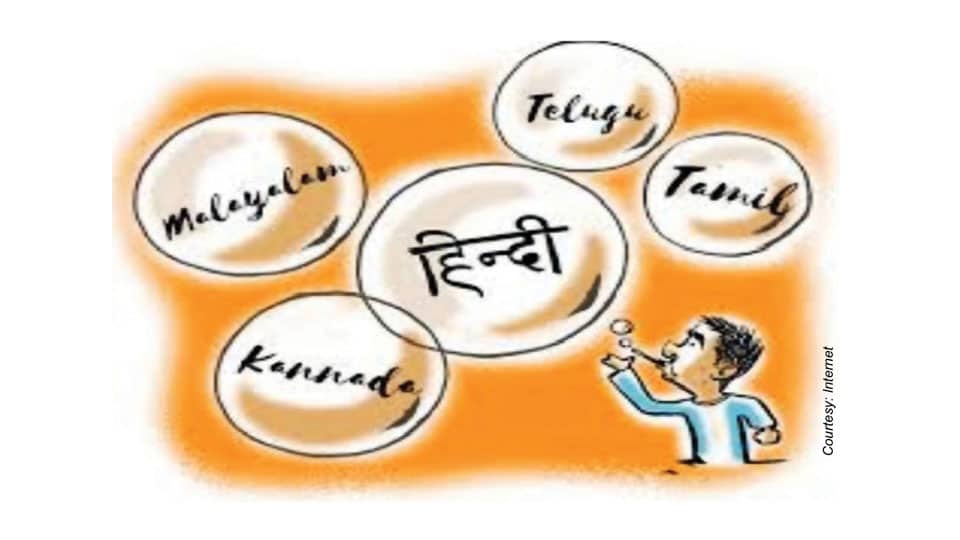Adults who speak different tongues and the growing children from the stage of a toddler to the school-going age, say three years, who learn to speak in one language or the other fall into different slots. The number of tongues in which the land’s people in different regions interact both verbally and communicate in writing with script that they have used for years makes a fascinating study. The languages which either don’t have their specific script or use the script of different languages are an infinitesimal fraction of the total number of languages that we get to hear in the open space. Much is being made of mother-tongue and medium of instruction in schools in circles of people in public life only to whip up emotions in society. The sense of happiness that one gets when the other person, including strangers, responds in one’s own language cannot be expressed adequately in words. The monumental achievement of unifying hundreds of kingdoms, large-small-tiny by the nation’s first Home Minister seems to have been undone by dividing the nation’s geography into narrow regions on the basis of the languages spoken by the respective area’s population. Division is the end result of that act.
Mysuru, then Mysore, hosted people who spoke different languages without any prejudice or disfavour of tongues of various sections of society, obviously without any public debates on languages of the kind that we observe nowadays. Writers did gift literary works in their respective languages, including Kannada, that continue to be rated high even after several decades. That cannot be said about later generations of the region.
The more we ponder about the land’s languages, more fascinating features of every language are bound to come to our notice. First and foremost feature is the commonality of words among the various languages that should make us wonder about the mutual inputs among the languages enriching every language. Sayings, proverbs, idioms and even slangs may be in different languages, but we can learn from the knowledgeable persons that the message in each of them bear similarity for the most part. Further, people pursuing different professions and those engaged in different works to earn a livelihood speak in styles that can easily reveal their professional identity. Doctors, engineers, lawyers, administrators, teachers and many other professionals freely draw from their stock of vocabulary while they interact with others. In that backdrop, the now-in-vogue three-language system in the country (English-Hindi-and a Regional language) seems to be a measure which can be likened to fire-fighting operation.
India’s languages, each with a long history, have survived themselves by a process of evolution, without any administrative intrusion unlike in our times. Let every language benefit from the patronage bestowed upon by the people themselves. Consensus, not conflict, is the best outlook upon the land’s languages for civil society.








“The monumental achievement of unifying hundreds of kingdoms, large-small-tiny by the nation’s first Home Minister seems to have been undone by dividing the nation’s geography into narrow regions on the basis of the languages spoken by the respective area’s population. Division is the end result of that act”
I agree that the biggest folly was the creation of states based on languages spoken. Blame this to Andhras, the Telegu -speaking people,who agitated to get a state of their own using Potti Sriramulu, who fasted to death. Andhra Pradesh was sliced off from the then Madras state, triggering the creation of other states based on spoken languages. More slicing off into new states from the existing ones is inevitable.
But the elephant in to room is the slogan of Modi and his side kick Amit Shaw:” one nation and one language which will see the southern states at war with the northern ones in the years to come.